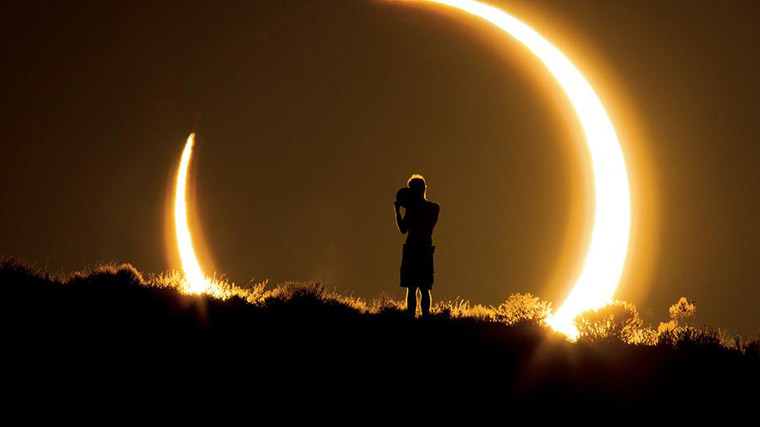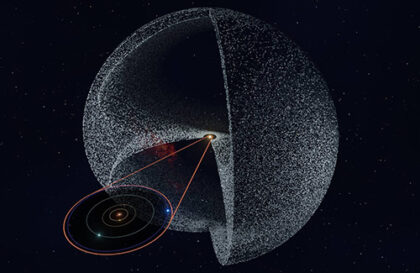2012, a similar event will be observed across the eight US states from Oregon to Texas, according to NASA.
During an annular solar eclipse, the size of the Moon in the sky is slightly smaller than the Sun, which does not allow it to completely cover the solar disk. This results in the formation of a thin outer ring called the “ring of fire”. This rare occurrence is well known.
Occurring on October 14, 2023, Saturday, will be an annular solar eclipse in North America. During this eclipse, the Moon, being at a new moon, will not appear large enough to completely cover the solar disk. This will lead to the appearance of a “ring of fire” – a bright ring around the dark disk of the Moon against the background of the Sun.
The annular eclipse is different from the total one that occurred on August 21, 2017. In a total eclipse, the Moon, being between the Earth and the Sun, completely covers the solar disk. In the case of an annular eclipse, the Moon is smaller and cannot completely cover the disk, leaving a bright edge visible.
The possibility of complete occlusion of the solar disk by the Moon depends on the distance between them. The Moon’s orbit is slightly elliptical, so its apparent size in the sky varies. On this day, the Moon will be quite far away, covering only 91% of the solar disk in a narrow band that stretches from Oregon to Texas.
On October 14, 2023, North and Central America, as well as a large part of South America, will witness this event. A particularly long “ring of fire” will last 5 minutes and 17 seconds off the coast of Nicaragua and Costa Rica. Seeing the ring of fire also promises to be spectacular in the US Southwest and at the Mayan temple at Edzna in the Yucatan Peninsula, Mexico.
We emphasize that even where the duration of the “ring of fire” is short, it will also be possible to observe a partial solar eclipse both before and after the main event. The most important thing is the presence of clear weather. It is recommended to check weather forecasts before planning an observation.
In conclusion, it is worth noting that the next annular solar eclipse is expected on October 2, 2024. This event will be visible from the Pacific Ocean, the southern regions of Chile and Argentina. The most favorable place for observation will be Easter Island, where the duration of the “ring of fire” will be 6 minutes and 9 seconds.
Credit рhoto:
https://science.nasa.gov






